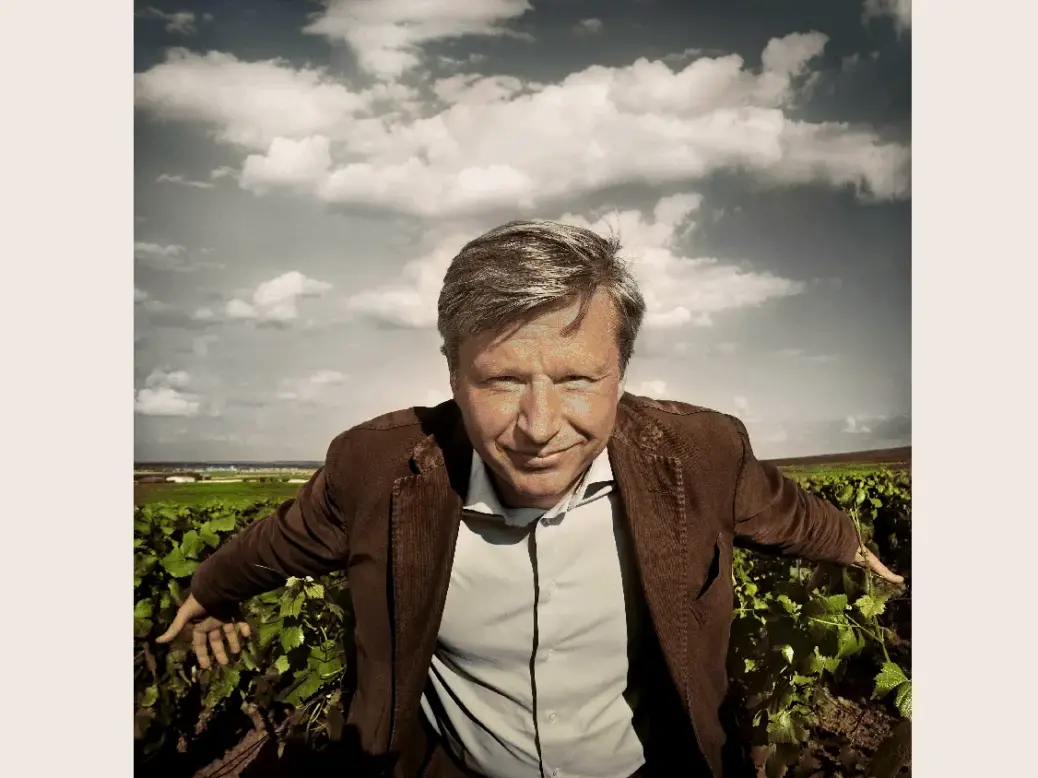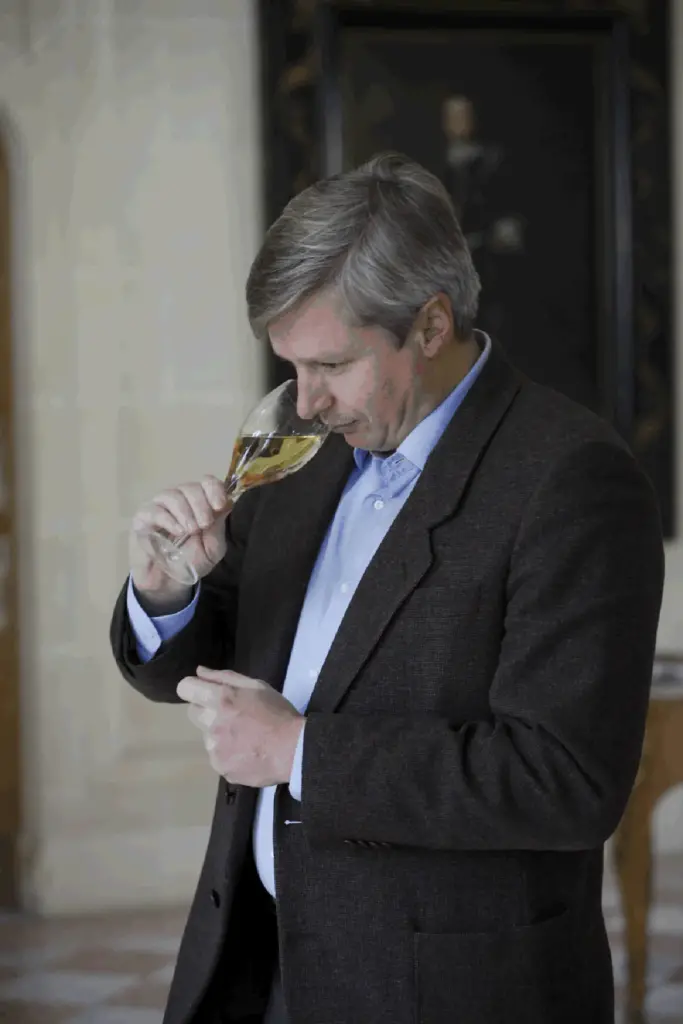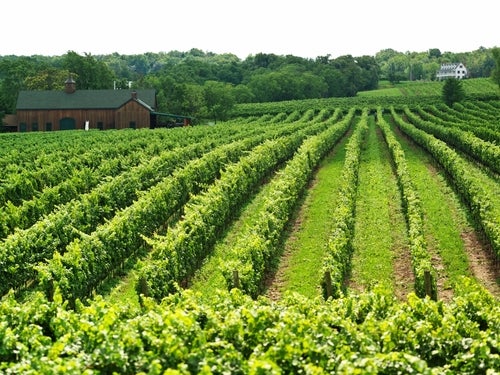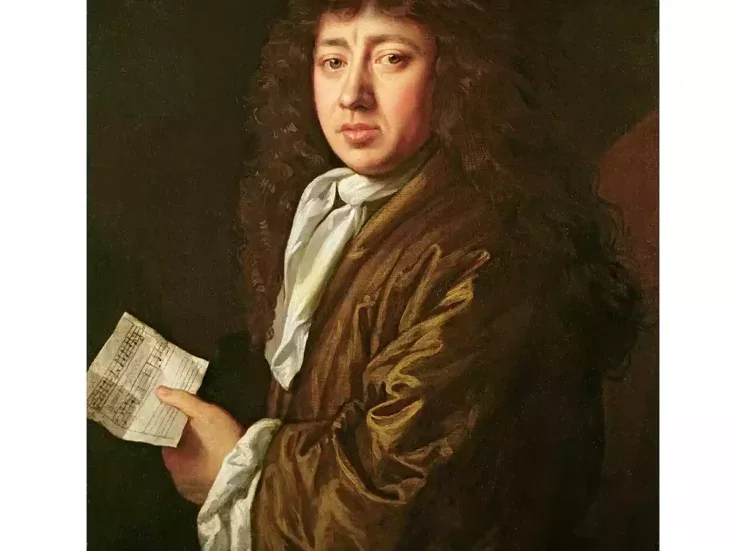
In the third of a series of extended interviews with leading wine growers marking 20 years of The World of Fine Wine, Jean-Baptiste Lécaillon of Champagne Louis Roederer tells David Williams about the philosophical journey he has taken over the past two decades.
Vignerons’ stories: Katharina Prüm
Vignerons’ stories: Eben Sadie
Vignerons’stories: Véronique Sanders
Vignerons’ stories: Telmo Rodriguez
Vignerons’ stories: Francisco Baettig
Vignerons’ stories: Diana Snowden Seysses
Vignerons’ stories: Brian Croser
The winemaker and the saucemaker
Jean-Baptiste Lécaillon: Before the 1990s, winemakers were just taking fruit and making wine from whatever they were given. Since the 1990s, we have had a revolution, where the winemakers have been working in the vineyard to design the type of phenolics, the type of sugar, the type of acidity, the taste we want… because we have realized that to make the best wine, the best technique is to act less like a winemaker.
I often compare that to the gastronomic scene. In the 1980s, the big name was Paul Bocuse, and the most important man in the kitchen brigade was the saucemaker, because the sauce was bringing the flavor to the ingredients—not the ingredients themselves. Today, thanks to many influences—Japanese influences, Slow Food, all of that—we now want to let the ingredients speak, to get the saltiness of oysters and not put too much sauce or vinaigrette on top of them.
The difference between a chef and a winemaker is that the winemaker doesn’t have to buy his ingredients from small growers or paysans from different places. We can do it ourselves. I think this is really the starting point of the past 30 years. And that is not only a change of habits. We also realized that chemistry is not God—it’s not the tool that makes everything OK. It’s a very useful tool. But you must control and master the way you use it, and you shouldn’t abuse it, whether it’s pesticides and fertilizers, or, as a winemaker, in the cellar.
We are part of a larger ecosystem
Jean-Baptiste Lécaillon: It all comes back to understanding that we are part of a larger ecosystem—this ecosystem is fragile, and we have to respect the work of nature. I remember being at university, and people were studying vineyards… and people were saying in the 1980s that the vine needs so much nitrogen, so much potassium, so much phosphorus… So, we were feeding the vines. Today, the philosophy has completely changed. We feed the soil… which will eventually feed the vines. It’s not a direct link between man and vineyard. It’s a link between man, the earth, and the vineyard.
So, this is agriculture. It’s as simple as that. It’s nothing new, but I think we have now fully realized all of that—and that has pushed us winemakers to go back into the vineyards to craft change. We revisit all our techniques—and when I say revisit, that’s important, because whatever I’ve done at Roederer, my motto has always been: “Back to the roots.”
I’ve been asking, “What have our ancestors been doing? What have our predecessors been doing? What was the generation before ours doing?” I wanted to put things into a perspective that understands there is not one model—there are different models—and this is how we will succeed in the future, this is what will shape the next 30 years. And whether it’s adapting to climate change, or anything else, it’s about changing slowly from one model to the other one, and then coming back to the first one. Maybe find a third one and come back again. Always adjust your model and change your model, because doing the same thing every year for 30 years for anything is no good.
You shouldn’t eat the same food for 30 years, or drink the same water for 30 years—so, don’t do the same farming for 30 years. It’s just not possible… because your farming has such a footprint on living elements, that if you do the same thing every day, every year, you select your disease, your enemy. In fact, you make the battlefield easier for your enemy, because you don’t confuse them.
I didn’t want to be “green”
Jean-Baptiste Lécaillon: So, the past 30 years for me have been about going back to the vineyard, understanding how it works again, and being as humble as possible… and because of that, I have switched to organic farming. I didn’t do it just for the sake of being organic. I didn’t want to be “green.” That wasn’t the target at all. The idea was to put down all the shields we’ve built to protect ourselves. To remove the seat belt and feel the pressure because, when you have no safety net, it pushes you to be better.
It’s been a fascinating journey—putting yourself at risk and relearning and finding a different direction. And then I thought, why should I wait? There is biodynamics; there is permaculture; there are all these different tools, so let’s bring them in. Not to “be biodynamic,” not to “be permaculture,” but just to say, let’s look at all the inventory of things people have thought of and try them! I don’t understand most of biodynamics, by the way! But does it do something or not? If it does, I don’t care about Steiner. But if it works and if it makes my vines better, why not do it? I wanted to have full freedom.
The challenge of biodiversity
Jean-Baptiste Lécaillon: So, we talked about organic, we talked about biodynamic. You can talk about soils, about not using pesticides or whatever—all these techniques to make your soil clean. But I think there is another challenge that is even bigger than this one. And that is biodiversity—the biodiversity challenge, which, for me, is the next level. The idea is to get biodiversity within massal selection, by going back to the old vine material—the rootstocks, the Pinot Noir and the Chardonnay, the Arbane and the Petit Meslier and all the other great grape varieties—and do a full inventory.
That’s what we started in 2002—a full inventory of the genetic material that has been doing this journey with us for centuries. What is in our own fields? What is around us as well? Because this genetic material, this Vitis vinifera material, or rootstock material, has seen many changes as well; it has been organic for such a long time—more than organic, by the way—and it has traveled from the Middle Ages… and it’s still here today. So, that has seen many, many different climates, many, many different conditions… and they are survivors. They are resilient to this big world. So, let’s make sure we have as many of them as possible. And let’s make sure that we don’t plant only one clone in one plot, but plant 30 different individuals because you need to confuse the disease; because if there are different stages of evolution, ripeness, you don’t have the same deal.
So, I think genetics is now the next chapter that we have to work on—and that will probably give us a lot of power, a lot of resilience in terms of taste, and resilience of the vineyards into a changing world… and that will be very important.
We started our own nursery in 2008, reselecting from all our old vines, and today we have 150 different Pinot Noirs—all virus-free. They come from old vines, but they are clean. At Roederer, we always make the most of science as well. There is no point in developing viruses!

When we do find any virus-infected vines, we put them somewhere else—but we look at them as well, to learn from this virus infection. Because we all have different viruses within us, and we have to live with them. So, the story is not the virus itself—it’s how the vines deal with the virus, the stages by which they can cope with it, and at what level they cannot stand it anymore. That’s what we have to find: What is the status of the vines versus the virus? Because you will always have viruses. You cannot stop them. That’s life. You cannot fight against life. Never.
We have created an association of growers in Champagne that is now run by the CIVC [Comité Interprofessionnel du Vin de Champagne]. We do massal selections all over Champagne, then gather the material at the CIVC, in a special location, and then we can go and take buds back into our own vineyards. The idea is to build a bank of maximum diversity. Maybe I can take some Pinot Noir from Barnaut in Bouzy, and some Chardonnay from Rodolphe Péters, and they can take some from Roederer. And in the end, I think we freeze the diversity at the regional level, which is even better.
Another possible tool is resistant hybrids developed through genetic manipulation. And many people believe in this as the future. I’m not saying this is not the future—I’m saying it’s an interesting topic. But we have no idea how these new vines will resist over time. Maybe we are creating vines that after only 20 years won’t be working at all. That’s why I think massal selection is more important—because we know it has 2,000 years of history behind it, while the hybrids are new. They have no history, no track record. I’m not saying it’s wrong, I’m saying this is something we should work on. But let’s make sure we have a strong pool of diversity to maintain our direction, and take our time.
Destroyed by civilization
Jean-Baptiste Lécaillon: I think we have done a lot of damage already. And because we didn’t see it early enough, I think it’s now a question of survival—we are in survival mode. Biodiversity has been considerably destroyed by our civilization. By our farmers. By our models of production. By the market. Because we had to make some types of ingredients that were very commercially necessary and in demand.
We have specialized too much. Agriculture has never been a specialized industry. In the past, they were doing many things at the same time, so they were cross-fertilizing every field. Now, there is no more cross-fertilization, and that has resulted in very poor biodiversity.
So, we need to change the model. I’m not saying we have only to go back. I’m saying we have to change our practices, to recreate this necessary diversity—more Pinot Noir, more Chardonnay… more insects, more bees, more worms, more bacteria… that would be the best, the most resilient ecosystem.
Experts in climate change
Jean-Baptiste Lécaillon: No region has more expertise on climate change than Champagne. Why? Because Champagne is sitting in a very unstable climate. We are between a maritime climate and a continental climate, and there is a fight in the sky between them. Some years are very hot and sunny, and then Pinot Noir is king, and you make very deep Pinot Noir wines. And then some years are cool and wet, and then Chardonnay is queen, because it handles that weather much better than Pinot Noir. And that’s why we have both Pinot Noir and Chardonnay, by the way!
So, we have had this battle in the sky that was not called climate change—it was called an unsettled climate, or a variable climate. So, we have organized our own knowhow accordingly—I’m talking about Non-Vintage, keeping some reserve wines from hot years to blend with cool years, and reserve wines from cool years to blend with hot years to maintain the style, year in, year out, in a very, very… well, yes, variable climate.
So, we are in a perfect position to speak about that, because our product itself—Non-Vintage—has been designed for that. We have very inconsistent raw material, ingredients that are always changing. No two years have been the same in Champagne for the past 200 or 300 years. And what is climate change? It’s never the same—sometimes it’s warmer, sometimes it’s cooler, sometimes it’s a bit wetter… So, this is in our DNA. This is in our product. This is in our techniques. The difference today is that it’s more amplified than it was, and that’s where we see the effects of climate change.
We have the difference from one year to another, which is maybe a little bit more amplified from one year to the next, and also maybe from one month to the next within the same year—you can have a dry month followed by a very wet month. And so, it demands of us as a grower, and as a master blender, more agility, more flexibility, and more speed in our adaptation, in our decision-making.






